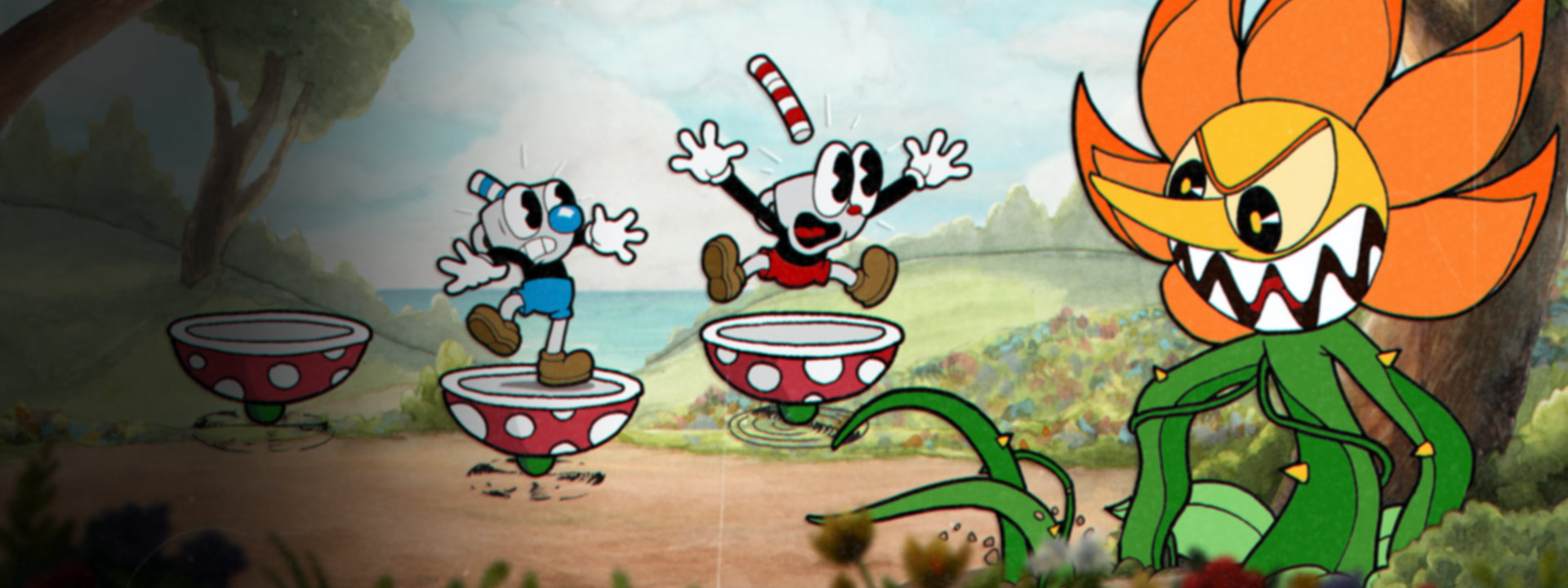Xbox’s Newest Hit, Sounds Like It Was Made in the 1930s

Video games didn’t exist in the 1930s, but the forthcoming game Cuphead asks the anachronistic question: What if they did? What would a video game from the 1930s sound like?
—
October 23, 2017
Cuphead is a side-scrolling shooter that looks like a Max Fleischer cartoon but plays like Super Nintendo. A game this crazy deserves a soundtrack that’s equally one-of-a-kind. So with Toronto’s crucial musical community at his disposal, composer Kris Maddigan forged an original score that mashes together early 20th-century ragtime with the Depression-era big band to create a sound that feels both familiar and fresh. And it all came from Maddigan asking himself one weird question.
“What if in some alternate dimension, they had video games in the ‘30s? What would that sound like?” Maddigan tells Inverse about his process. “Big band music would still sound like a big band, but what would that sound like for video games? That’s what we’re going for, this alternate reality of something that didn’t exist but could.”
A childhood friend of Cuphead creators Chad and Jared Moldenhauer, Maddigan — who works full time in the symphony of the National Ballet of Canada — was a natural choice to make the music for their lifelong passion project. As the Moldenhauers spent their youthful weekends in front of their consoles, Maddigan was right there playing with them, and all together they built the foundation for what would become one of 2017’s must-play video games.
Still, gamers were almost robbed of the experience, as Maddigan initially rejected his friends’ job offer.
“They asked me if I wanted to do it, and I said no,” Maddigan says. “It was way outside my experience and comfort zone. But I ended up writing it, just because we were friends and they knew we could have a strong professional relationship as well. We can chat without bullshit.”
Beginning with MIDI music as a template, Maddigan knew instantly the tone and style he wanted for Cuphead. He also knew he wanted real musicians playing real music, and so he sought the talents of the legendary Toronto outfit, Boss Brass.
“You can hire a bunch of people who haven’t worked together, and they can read the music, and they’ll be fine, but there’s not going to be synergy there,” Maddigan explains. “I wanted musicians who have played together for a long time. A large percentage of the people [playing for ‘Cuphead’] were members of the Boss Brass. It was important for me to find people who know each other and know each other’s playing. That kind of synergy is essential.”
While Cuphead is profoundly influenced by ‘30s cartoons, by being a game Cuphead had to dramatically behave in a way those old Silly Symphonytoons could not. While most cartoon music matches its characters’ goofy antics, there’s no such order in the chaos of video games. “We weren’t so concerned lining it up in that respect; we just wanted to get the vibe,” Maddigan says. “We’re still able to elongate the music on the fly as necessary, but there was a lot of limitations to what we weren’t able to do.”
Still, Cuphead took one step further as Maddigan made each track actually “end,” a rarity in video game scores. “If you listen to game soundtracks, it has the start, the bulk of the tune, and then the fade out. You never hear the end. My feeling was if you’re going to do 95 percent of the tune, you might as well end it. Even if people aren’t going to hear it. But I wanted to respect the music enough to make each tune complete.”
Cuphead gamers will never hear the complete music unless they buy the soundtrack, either on iam8bit’s super special vinyl release or digital (Studio MDHR is contemplating a Bandcamp release). “People who buy the soundtrack, there’s going to be a piece of the tune you’re never going to hear in the game,” Maddigan teases. “I felt it was important to make every tune complete.”
![]()
By Eric Francisco
Read the original article at Inverse.com

Recent Comments